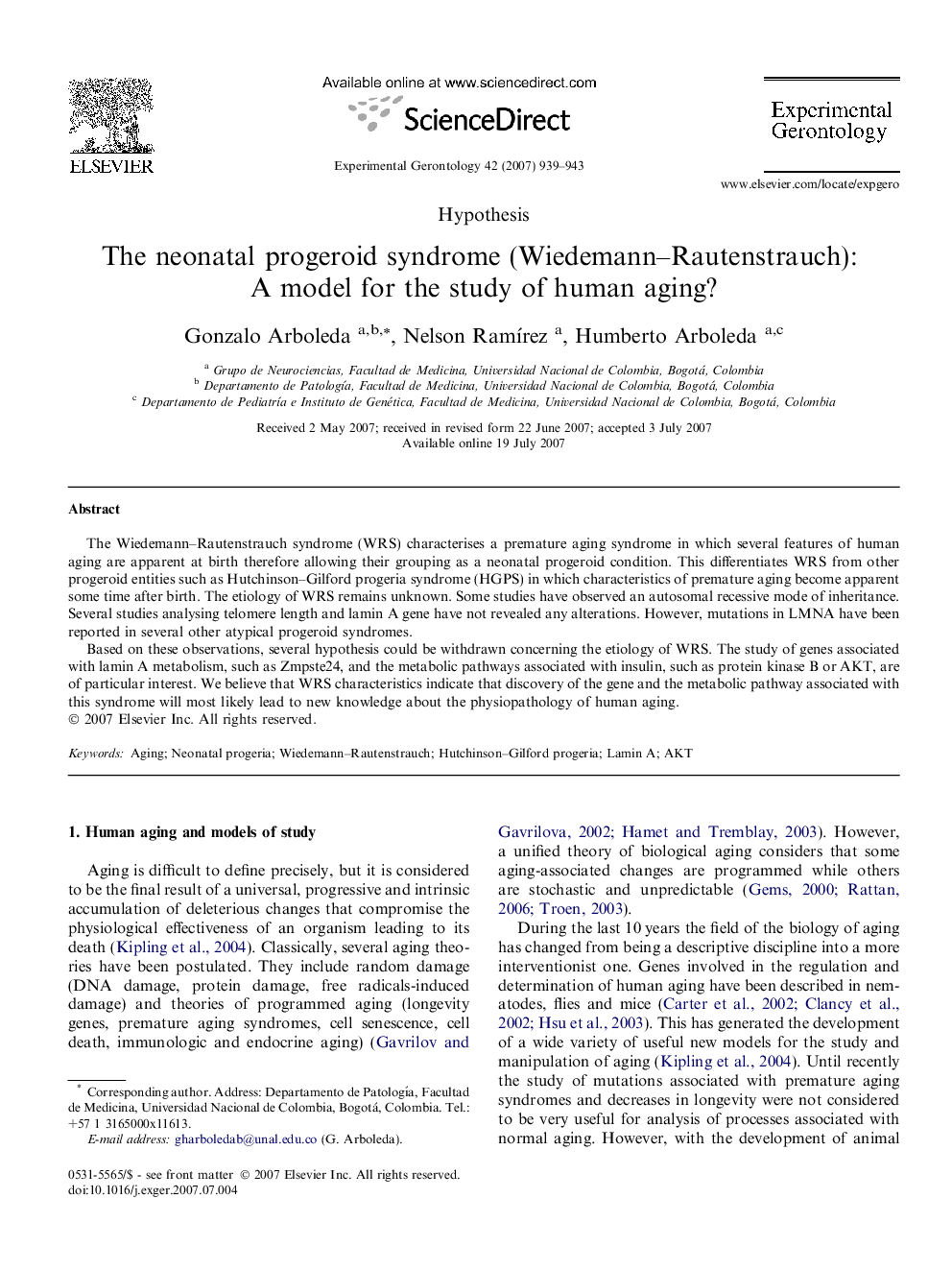| کد مقاله | کد نشریه | سال انتشار | مقاله انگلیسی | نسخه تمام متن |
|---|---|---|---|---|
| 1907233 | 1046341 | 2007 | 5 صفحه PDF | دانلود رایگان |

The Wiedemann–Rautenstrauch syndrome (WRS) characterises a premature aging syndrome in which several features of human aging are apparent at birth therefore allowing their grouping as a neonatal progeroid condition. This differentiates WRS from other progeroid entities such as Hutchinson–Gilford progeria syndrome (HGPS) in which characteristics of premature aging become apparent some time after birth. The etiology of WRS remains unknown. Some studies have observed an autosomal recessive mode of inheritance. Several studies analysing telomere length and lamin A gene have not revealed any alterations. However, mutations in LMNA have been reported in several other atypical progeroid syndromes.Based on these observations, several hypothesis could be withdrawn concerning the etiology of WRS. The study of genes associated with lamin A metabolism, such as Zmpste24, and the metabolic pathways associated with insulin, such as protein kinase B or AKT, are of particular interest. We believe that WRS characteristics indicate that discovery of the gene and the metabolic pathway associated with this syndrome will most likely lead to new knowledge about the physiopathology of human aging.
Journal: Experimental Gerontology - Volume 42, Issue 10, October 2007, Pages 939–943